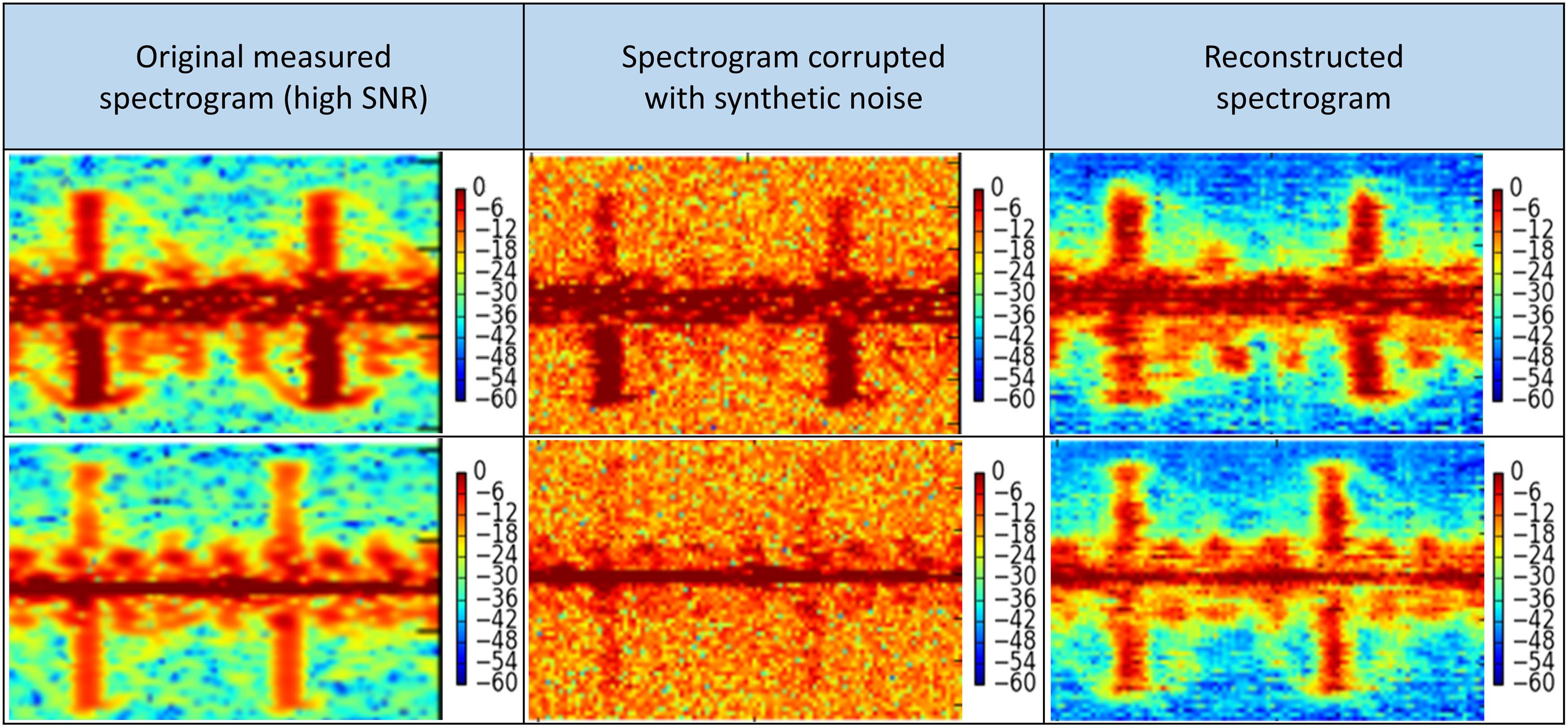
2 minute read
R. P. Trommel, R. I. A. Harmanny, L. Cifola, and
from Deep Learning for Classification of Mini-UAVs Using Micro-Doppler Spectrograms in Cognitive Radar
by Jinghua
Figure 7. Denoising adversarial auto-encoder applied to spectrograms corrupted with synthetic noise.
GANomaly network, as shown in Figure 4, except that the separate encoder is omitted and the objective function for training of the auto-encoder only consists of the mean square error between noise corrupted versions of the spectrograms and the uncorrupted spectrograms.
Advertisement
Figure 7 shows two examples of measured microDoppler spectrograms of a T-REX 550 helicopter with a high SNR in the first column. The second column shows the same spectrograms to which synthetic Gaussian noise has been added to lower the SNR. The third column shows the reconstructed spectrograms using a denoising adversarial auto-encoder. Although some details of the microDoppler modulations are distorted, it is still possible to recognize the micro-Doppler contribution due to the tail rotor and, up to a certain extent, the blade tip contribution.
In a second experiment, the denoising adversarial auto-encoder has been tested with measured spectrograms that are characterized by a lower SNR. As apparent from the reconstructed spectrograms shown in Figure 8, a signal to background ratio enhancement in the order of 20 dB is achieved by the denoising auto-encoder. Furthermore, information associated to tail rotor signature and blade tip rotation is partially restored. Although the SNR of the spectrograms seems to be significantly enhanced by the denoising adversarial auto-encoder, the impact of this preprocessing on the accuracy of a target classifier, such as a CNN still has to be investigated.
ADVERSARIAL TRAINING FOR SPECTROGRAM
GENERATION Training sets for target classifiers based on machine learning are often characterized by an imbalance in the number of examples for different target classes. For example, the imbalance in the training set used in this paper (see Table 1) is approximately a factor of two. This imbalance can have a negative impact on the convergence of the classifier during training and the overall accuracy [20]. There are several ways to mitigate the effect of an imbalanced training set. The first category concerns methods that leave the training set intact and modify the training procedure or the classifier to deal with the imbalance. The second category involves changes to the training set itself by generating data for classes that are underrepresented. In this section, a generative network called InfoGAN has been investigated for the generation of realistic training data for underrepresented target classes [21]. When compared with a standard GAN, an InfoGAN has the advantage that it learns in an unsupervised way, interpretable and disentangled representations of challenging datasets.

Figure 9 shows the architecture of an InfoGAN network Figure 8. Denoising adversarial auto-encoder applied to measured low SNR spectrograms.








